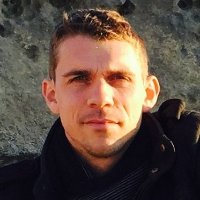 |
Dr. Nicholas LIPPIATT
nicolas.lippiatt@hnu.edu.cn |
His research career began in France where he used microwave heating to induce fractures within concrete materials to facilitate separation into its base components. The effect of microwave heating was tracked through changes in strength, stiffness and fracture under impact techniques and image analysis. During his post-doctorate in Belgium, he helped in the advancement and standardization of X-ray Computed Tomography and used it in the development of 3D At the University of Hunan, Nicholas is returning to the subject of concrete and the treatment of recycled concrete aggregates to increase the strength and durability of recycled concrete.
Education background
2011-2014: PhD Materials Science, INP – ENSIACET, Toulouse France
2010-2011: Masters of Research, INP – ENSIACET, Toulouse France
2006-2009: Bachelor of Materials Engineering (Hons.) University of Queensland, Brisbane Australia
Selected Papers
[1] Huang Y., Celikten B., Nicolielo L., Lippiatt N., Reinhilde J., et al. 2017. Micro-CT and nano-CT analysis of filling quality of three different endodontic sealers, DentoMaxilloFacialRadiology
[2] van Hooreweder, B. Lietaert, K. Neirinck, B. Lippiatt, N. Wevers, M. 2017. CoCr F75 scaffolds produced by additive manufacturing: influence of chemical etching on powder removal and mechanical performance, Journal of the Mechanical Behavior of Biomedical Materials 68, p. 216-223
[3] Bourgeois, F. Lippiatt, N. Powell, M. 2015. Introducing the concept of mechanical texture in comminution: The case of concrete recycling, International Journal of Mineral Processing136, p. 7-14
[4] Bru, K. Touz, S. Bourgeois, F. Lippiatt, N. Ménard. 2014. Assessment of a microwave-assisted recycling process for the recovery of high-quality aggregates from concrete waste, International Journal of Mineral Processing 126, p. 90 -98
[5] Lippiatt, N. Bourgeois, F. 2014. Recycling-oriented investigation of local porosity changes in microwave heated-concrete, KONA Powder and Particle Journal 31, p. 247-264
